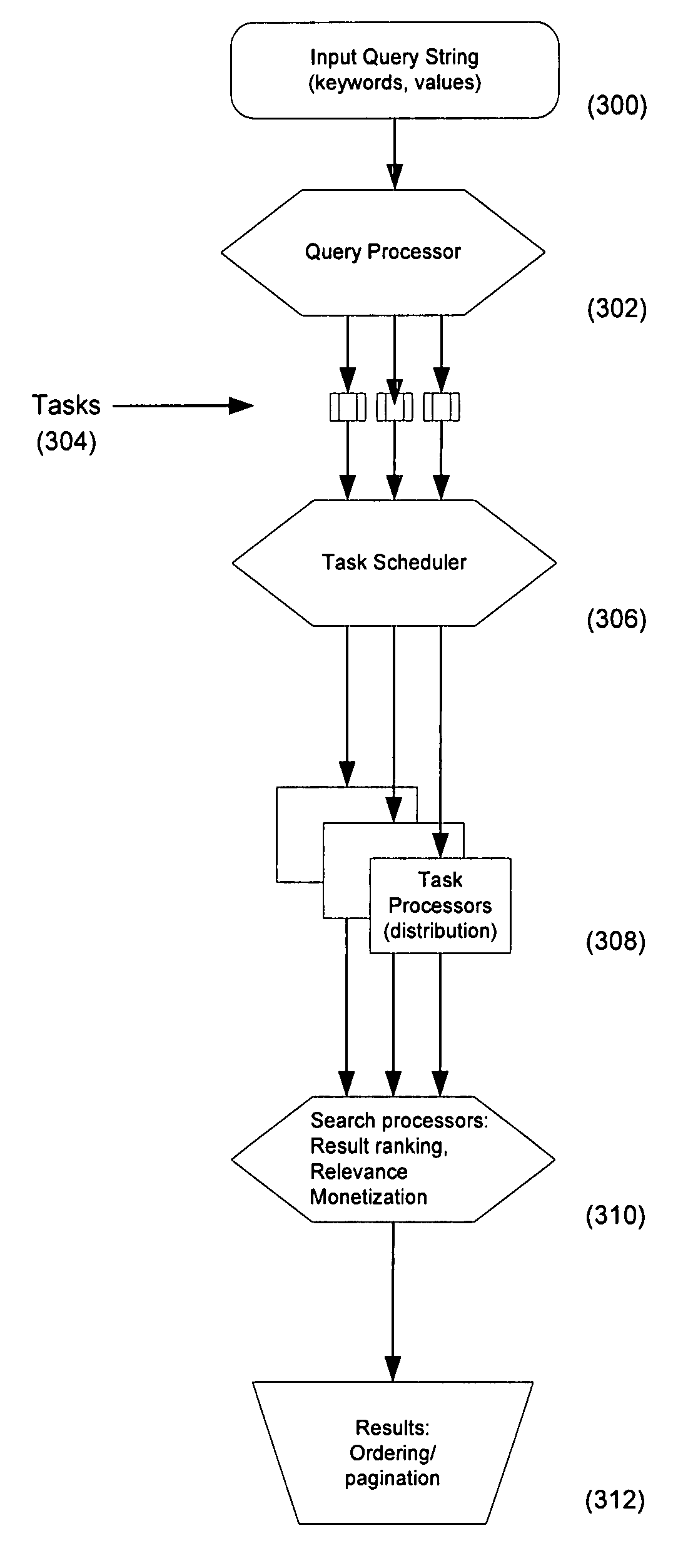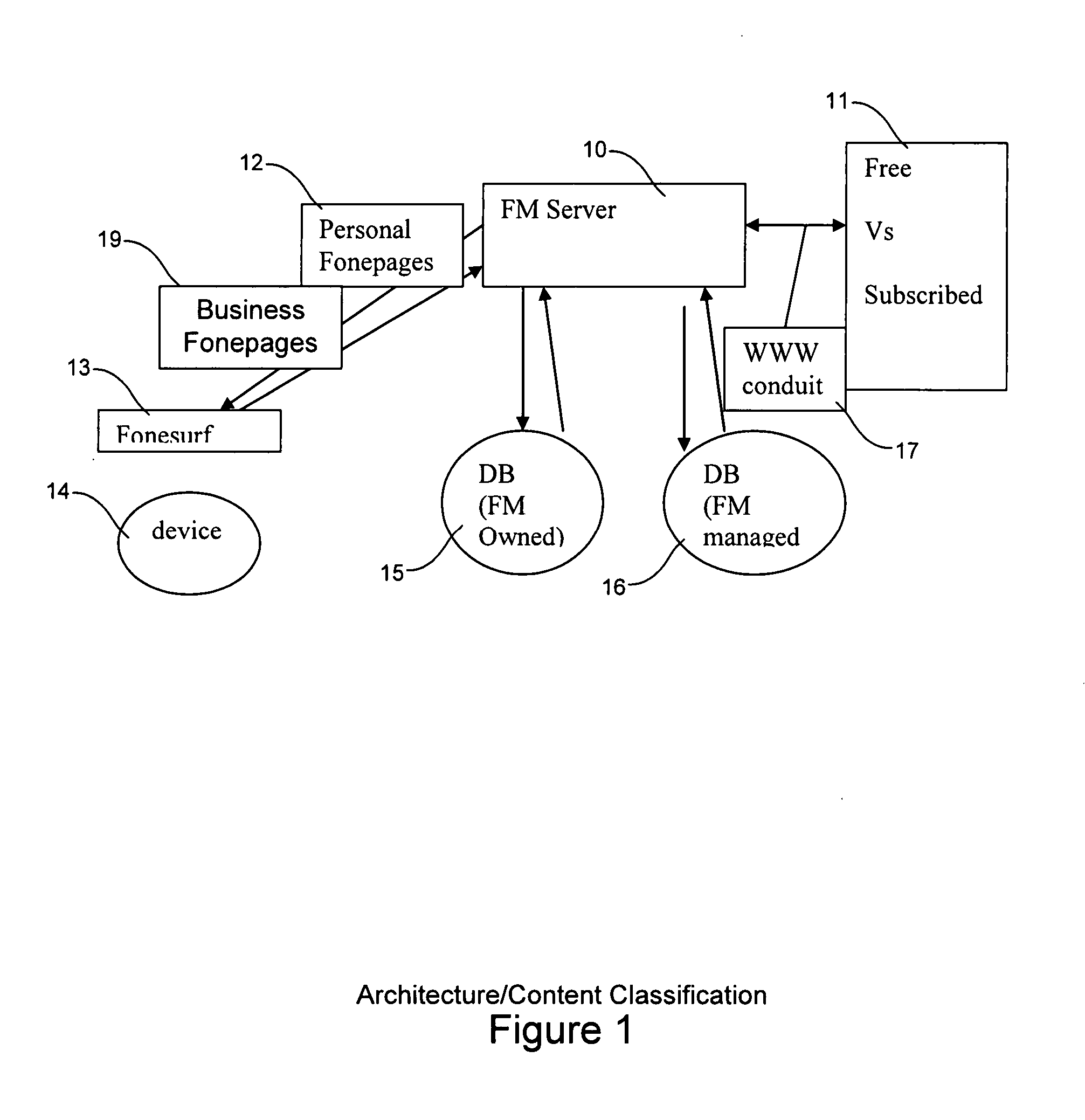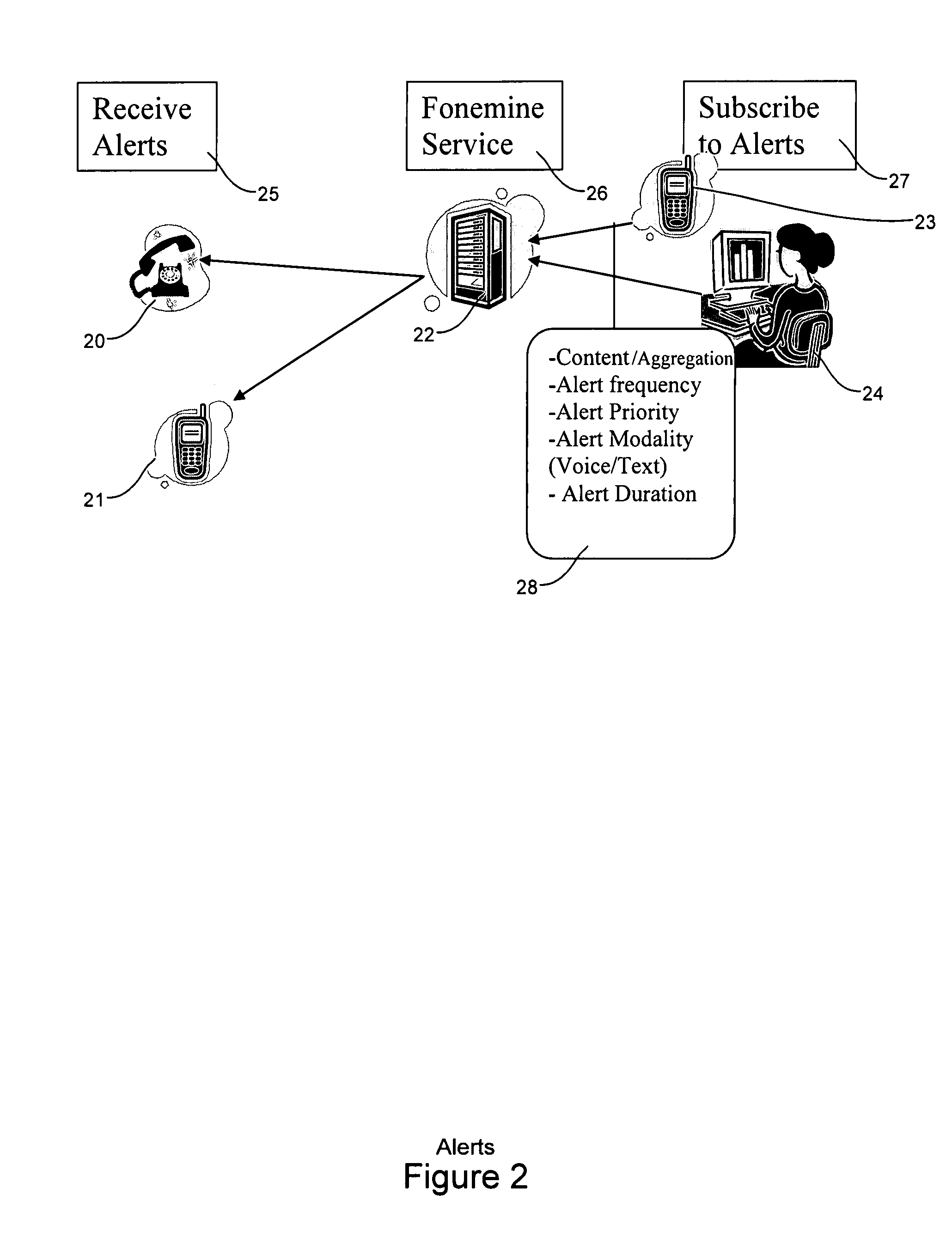Telephony based publishing, search, alerts & notifications, collaboration, and commerce methods
a technology of alerts and notifications and voice, applied in the field of data communications, can solve the problems of static and limiting, data services not tailored to telephone devices, and data services that do not seamlessly mesh with existing voice services, and achieve the effect of high-context relevant response sets and easy viewing/hearing
- Summary
- Abstract
- Description
- Claims
- Application Information
AI Technical Summary
Benefits of technology
Problems solved by technology
Method used
Image
Examples
Embodiment Construction
[0033] Embodiments of the present invention will now be described in detail with reference to the drawings, which are provided as illustrative examples so as to enable those skilled in the art to practice the invention. Notably, the figures and examples below are not meant to limit the scope of the present invention. In the drawings, like components, services, applications, and steps are designated by like reference numerals throughout the various figures. Where certain elements of these embodiments can be partially or fully implemented using known components, only those portions of such known components that aft necessary for an understanding of the present invention will be described, and detailed descriptions of other portions of such known components will be omitted so as not to obscure the invention, Further, the present invention encompasses present and future known equivalents to the components referred to herein by way of illustration.
[0034] Embodiments of the present inven...
PUM
 Login to View More
Login to View More Abstract
Description
Claims
Application Information
 Login to View More
Login to View More - R&D
- Intellectual Property
- Life Sciences
- Materials
- Tech Scout
- Unparalleled Data Quality
- Higher Quality Content
- 60% Fewer Hallucinations
Browse by: Latest US Patents, China's latest patents, Technical Efficacy Thesaurus, Application Domain, Technology Topic, Popular Technical Reports.
© 2025 PatSnap. All rights reserved.Legal|Privacy policy|Modern Slavery Act Transparency Statement|Sitemap|About US| Contact US: help@patsnap.com



